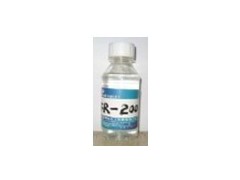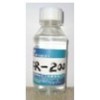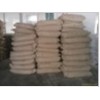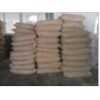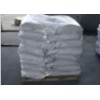| Classification: Chemical Auxiliary Agent | Place of Origin: Zhejiang China (Mainland) | Usage: Paper Chemicals |
| Brand Name: Fairland | Model Number: FR-200 ( TR) | Halogen free flame retardant for textile: undur... |
| Packaging Detail: | 50kgs,100kgs, 125kgs, 200kgs, 250kgs /drum |
| Delivery Detail: | 15days after reciept of the order/payment |
Water-soluble, nitrogen-phosphorus-based flame retardant additive for cellulosic and other textiles.
Flame Retardant FR-200
De
Applications flame retardant FR-200 may be applied by brushing, dipping, padding or spraying. The recommended method of application is padding. Drying may be carried out at normal drying temperatures but drying conditions should always be checked experimentally. When flame retardant FR- 200 is used with polymer dispersions, fluorocarbons and silicones, the components should be diluted with water before mixing to reduce the possibility of adverse reactions. Flame retardant FR-200 will withstand the curing temperatures required for combined finishes and minimal fabric strength loss. Consult Hangzhou Fairland Chemical Technology Co., Ltd. to arrange laboratory assessments of customer fabrics.
Typical Properties
Appearance.............................................................. Clear, pale straw-colored liquid
pH .................................................................................................................... 7.30
Density, g/cc .................................................................................................... 1.20
Solid content, w/w, % .......................................................................................... 30
Solubility ..................................................................................... miscible with water
Usage Level Fabric should be clean and absorbent. Dirt, size, natural waxes or applied finishes will prevent efficient absorption and may impair final fabric properties. Loadings depend on the fabric and the test method applied to the treated fabric. The following values are typical, but a small-scale laboratory test should be conducted before commencing large scale treatment.
Fabric % Dry Add-on
Cotton ............................................................................................................ 8- 16
Cotton/Polyester 70/30 ..................................................................................10 - 16
Polyester ....................................................................................................... 13 -16
Hessian ........................................................................................................ 13 - 16
Rayon ........................................................................................................... 13 -16
Flame retardant FR-200 is not fast to washing or water and the treatment must not be renewed after laundering the fabric. Flame retardant FR-200 treatment will withstand dry cleaning, e.g. the performance of a variety of treated fabrics is not affected by 12 commercial dry-cleaning cycles based on perchloroethylene. However, any aqueous additives or use of charged dry cleaning systems must be avoided.
Combined Finishes
Flame retardant FR-200 is compatible with a wide range of polyvinylacrylate dispersions suitable for use in single-bath systems for resin-bonded, non-woven fabrics based on rayon staple. Flame retardant FR-200 is also compatible with a number of phenolic, PVDC and PVC copolymer dispersions. In addition, stable single-bath systems can be formed from both fluorocarbons and silicones with flame retardant FR-200 to produce combined flame-retardant water-repellent finishes for high-humidity environments.
Safety and Handling Information
FR-200 should be stored in sealed containers away from strong alkalis and at temperatures below 5 °C to prevent crystallization. Crystals may be dissolved by heating (not above 30 °C) or by dilution with water. For specific safety, toxicity and handling information, please refer to the material safety data sheet for this product.



